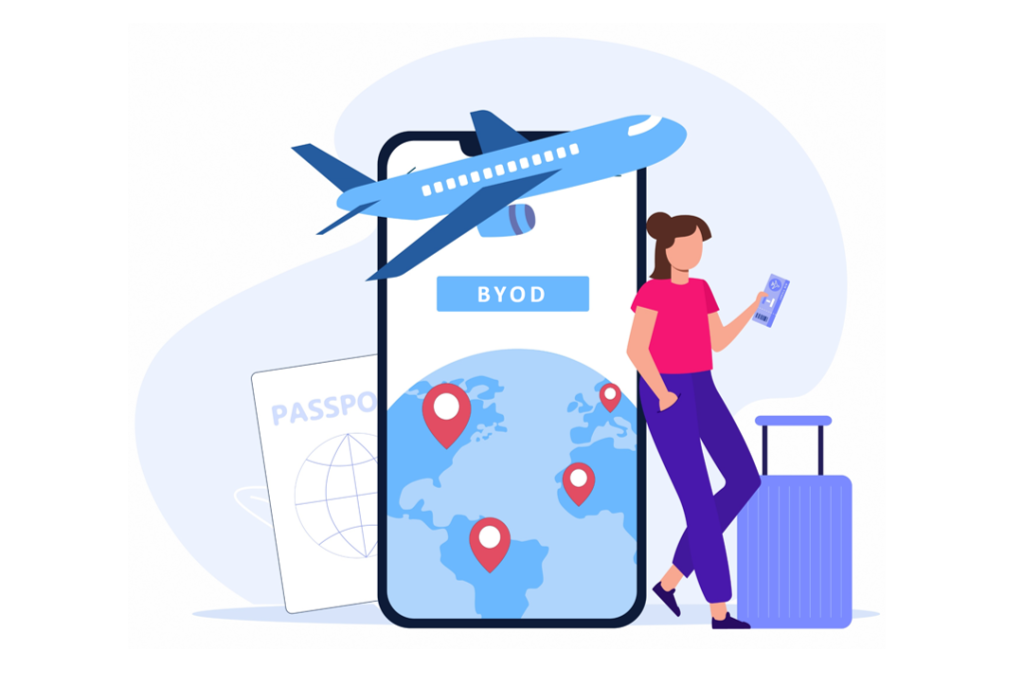In today’s digital age, it is hard to imagine our daily lives without smartphones. Whether it’s managing appointments or staying in touch with loved ones, these pocket-sized devices have become seamlessly integrated into our routines as constant companions. The aviation industry, too, has now felt the profound impact of this development.
It is now quite common to conveniently check-in online using a smartphone several days before departure. Long wait times in terminal queues or additional service fees for on-site check-in are a thing of the past. Furthermore, the aviation sector has witnessed a recent shift in the direct integration of smartphones into the airport experience, further enhancing travel efficiency and ease. As a result, the term “BYOD” is on everyone’s lips, and the technologies behind it are becoming increasingly prevalent at terminals. BYOD promises more efficient and streamlined passenger and baggage handling. But does this technology, which is currently receiving so much attention, truly represent the future of travel at airports?
BYOD on the Rise
The term BYOD stands for “bring your own device”. At airports, this means passengers can use their own devices, such as smartphones, tablets, or laptops, to check in baggage, for example.
To accomplish this, travelers connect their own device to a dedicated BYOD self-service machine, such as the Materna IPS Tag.Go Mini. The connection is established through a network link. After a successful connection, passengers can then control the device via their mobile device.
Balancing the Pros and Cons of BYOD
For airports and airlines, the use of BYOD offers significant advantages. These systems require considerably less hardware as all processes are handled through the traveler’s smartphone. Consequently, costs are lower for hardware and maintenance. Additional services, such as smart payment, which also require passengers to use their own devices, can be seamlessly integrated into the check-in process. Moreover, it bypasses the need for credit card payments in public places, which is a thorn in many people’s side due to security concerns anyhow.
Overall, passengers benefit from a straightforward and speedy baggage handling process as BYOD leverages the familiarity passengers already have when handling their own device.
However, it is not negligible to consider the needs of older generations who may not be as tech-savvy and prefer traditional baggage drop-off machines.
Other small hurdles that “bring your own device” might pose for baggage management become more apparent in practical use. For example, it can be inconvenient to handle your luggage and smartphone at the same time, especially when time is of the essence.
While the connection process between the passenger’s device and the machine requires an extra step compared to the traditional process directly at the self-service machine the many benefits outweigh the weaknesses of BYOD.
The Future of today’s Travel
Bring your own device technology is a promising approach to making travel more convenient and user-friendly for airlines, airports, and passengers. Currently, the technology is especially suitable for younger generations, as they are more familiar with smartphones and other mobile devices. However, with the right adaptations, BYOD holds significant promise for the future for all travelers. Among other things, it has the potential to play a pivotal role in advancing the concept of digital identity within the airline sector. The future of travel is undeniably intertwined with BYOD.



